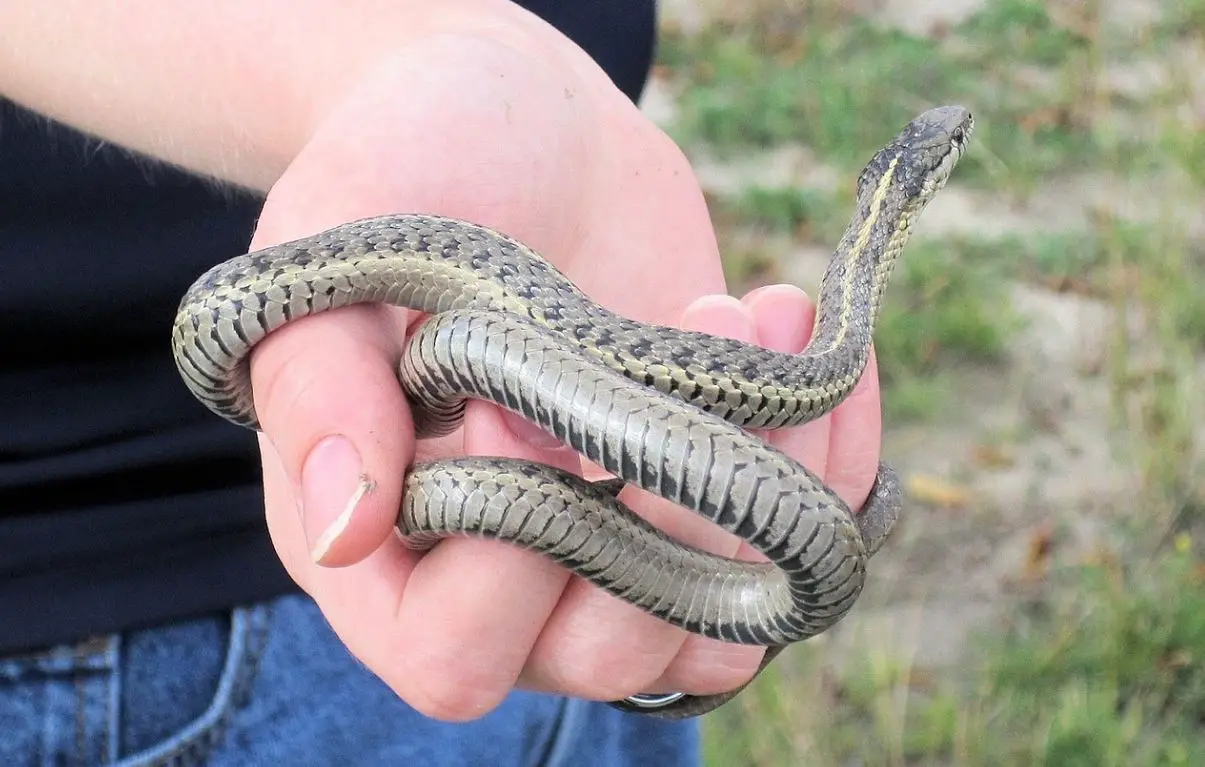
Garter snakes, or sometimes called gardener snakes, make excellent pets because of their gentle and docile nature. These snakes prefer to glide away from confrontation than fight. Instead of biting, they can spray a rank musk on you to keep danger away. Because of their docile nature and the fact that they aren’t venomous makes them an excellent choice for someone who likes something different for a pet.
Garter snakes are perfect for you if you’re a new snake owner because they aren’t needy. A garter snake is low maintenance and entertaining to watch.
What Are Garter Snakes Like as Pets?
Garter snakes are not constrictors but small colubrid snakes. These snakes won’t pose any threat to you besides salmonella, but that is carried by any reptile. You need to remember to wash your hands very thoroughly after handling your pet snake.
A garter snake is active during the day, which makes it fun to watch. A garter snake has keen eyesight and sense of smell. It makes it easier for them to find their prey and capture it.
Are Garters a good beginner pet?
Yes, for a beginner herpetologist, with their calm temperament, bite, which is harmless, and small size, they are perfect if you’re a first-time snake owner.
How big do Garters get?
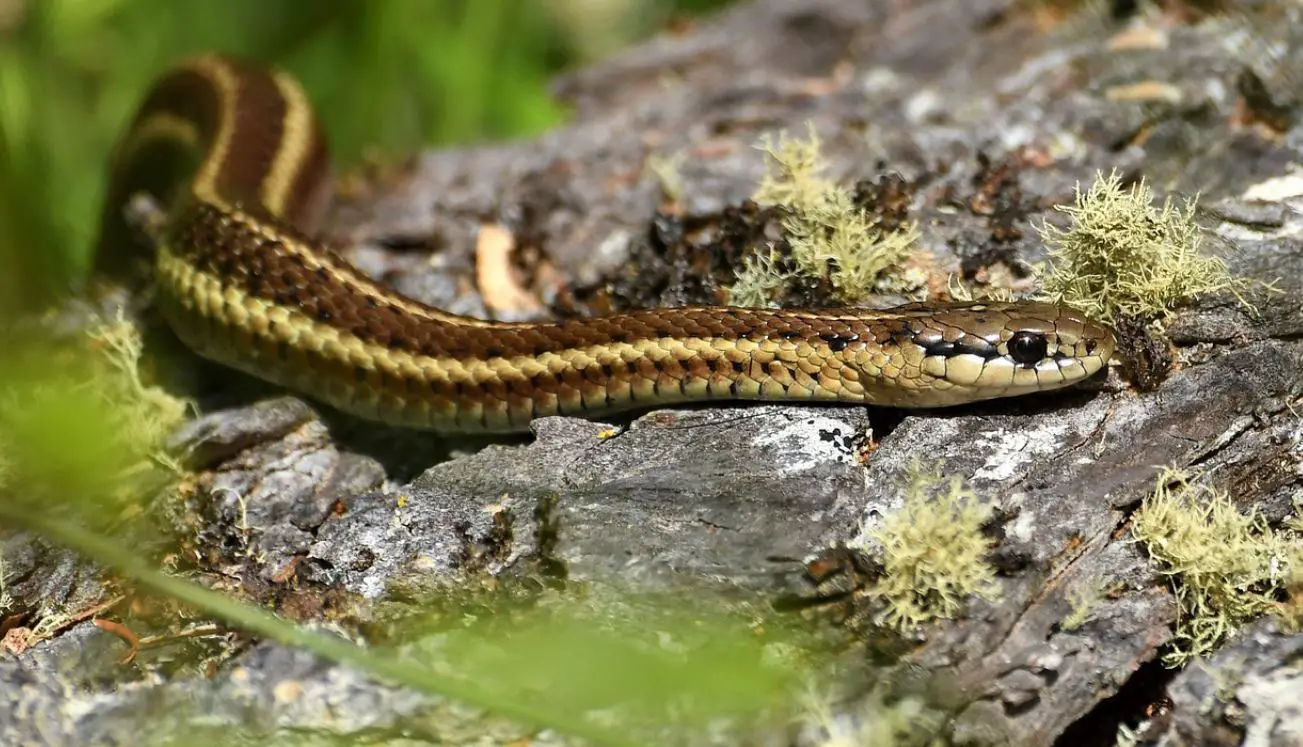
Your garter snake may average out between 23 to 30 inches. But there have been some garter snakes which have grown to five feet in length. In captivity, your pet may live between eight to ten years.
Females can get to around three feet long, depending on what species your snake is and males about two feet or less. These snakes have reasonably slim bodies, with the males being the narrower of the two. Baby garter snakes at birth are around six to eight inches long.
Types of garter snakes
There are 34 species of garter snakes mostly found in North America, with some in the colder regions of Alaska and others in the warmer states. But the most popular garter snakes to keep as pets are:
- Common garter snake
- Checkered garter snake
- Ribbon snake
These are the gentler species and do better in captivity. You can identify garter snakes by a narrow stripe that runs lengthways down the snake’s back. The stripes are yellow on a greenish, black, or brown background.
Ribbon Snake
A ribbon snake has a resemblance to garter snakes with some differences. A ribbon snake has a noticeable bold line that separates the yellow stripe from its belly. The garter snake doesn’t have this line. A ribbon snake’s tail accounts for about one-third of its length, and it’s longer than a garter snake.
Checkered Garter
A checkered garter snake has a calm temperament, handled easily, and rarely bite. These snakes are one of the most popular snakes to keep as a pet for beginners. The snake has a checkerboard pattern on its body. However, the lines and stripes can still be seen. Sometimes a checked garter snaked will be olive-green with a checkerboard pattern and light-colored stripes.
Sometimes a checkered garter snake will be mistaken for a common garter snake. It’s because some common garter snakes have the checkerboard pattern faintly on their back. Also, if the pattern is this light, it just might be a common garter snake instead of a checkered garter snake. Be sure you know what you’re buying when purchasing your new snake.
Do garter snakes bite, and are they dangerous?
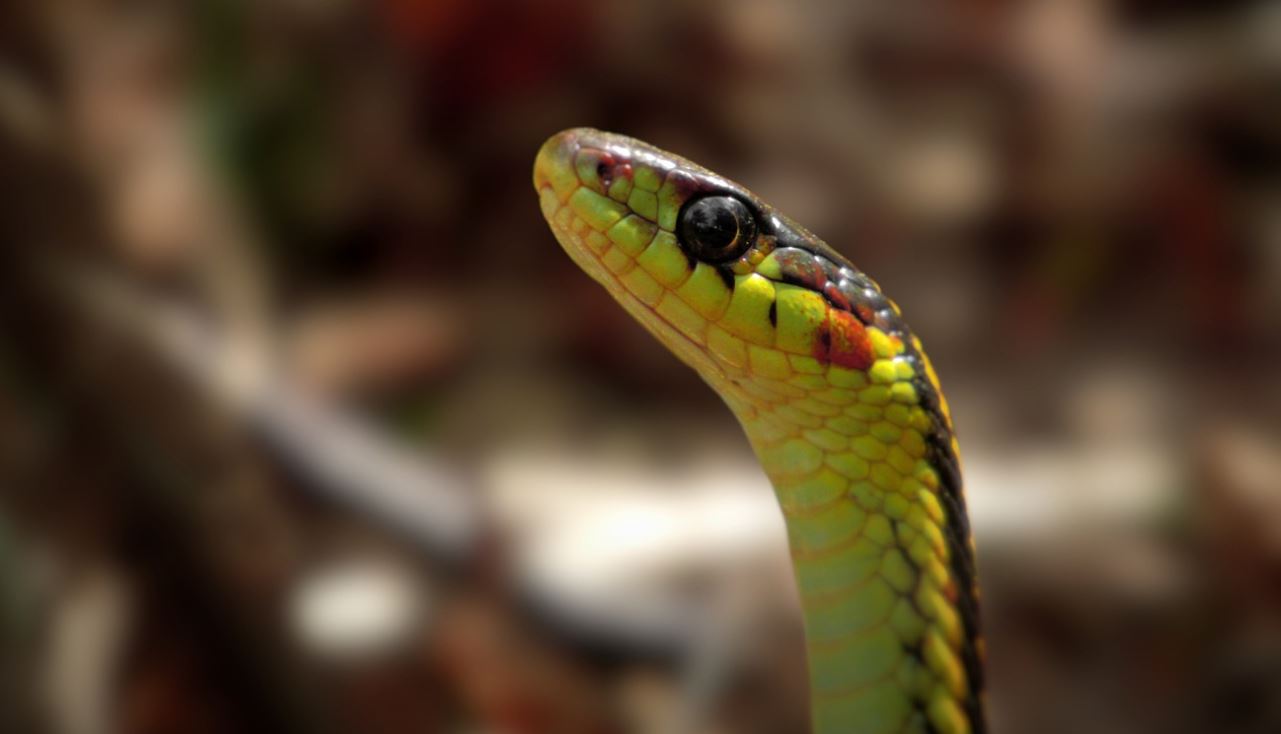
Your garter snake is not harmful, but if not used to being handled will strike out. To get your snake used to you, you need to allow it to slide over your fingers, then gently pick it up. Be sure to support your pet’s weight and let it move around your hand as it twines around your fingers.
If you startle your snake, it will emit a liquid all over your hand that smells foul. With frequent handling, your garter snake will become used to you handling it.
If your snake does feel threatened, it will respond accordingly. It may thrash its tail and hide its head. It could release any feces it has available and an unpleasant musky odor. Or, it may flatten itself on the ground and get into a defensive position to bite or strike.
Once your snake is used to you handling it, it will musk you less each time. Musking is a response that’s common until they’re used to their new surroundings.
What Habitat Do They Need?
Garter snakes are happiest in a reptile terrarium style cage or an aquarium instead of a rack system. You can also use a screen or acrylic style terrariums, which will make an excellent cage as well. The minimum size for an adult garter snake is either a 28-quart plastic tube or a 29-gallon aquarium. If your snake is a male, it can be kept in a slightly smaller habitat. This is because the male is smaller than a female.
You need to make sure that there isn’t any way for your garter snake to escape. Your snake is small, so if it can fit its head through space, the body will follow. If you have a larger cage, the temperature will be controlled better and maintained for an ideal temperature.
If you decide you want to purchase than one garter snake, you can house them together, but the habitat needs to be larger. But the snakes need to be separated for feeding, so there isn’t accidental cannibalism. You can keep a pair of snakes in a 55-gallon size tank, and they’ll be content. The more space you give your snakes or snake, the better because garter snakes love to climb and are incredibly active.
You will need a substrate for your snake to be happy. You can use newspaper pellets, pulp crumbles, Aspen shavings, or Zoo Med Repi Bark, Zoo Med Natural Cypress, and ExoTerra Coco Husk products.
What to avoid using is clay cat litter, cedar, pine sand, or aromatic wood products or outside dirt. If you end up having baby snakes, you can use paper towels or newspaper, but this isn’t recommended for your adult snakes. Garter snakes love to burrow, so you need to provide it with an inch or two of a substrate. Also, because of the high metabolism of your garter snake, it will want to burrow and make tunnels.
What Accessories Do We Need to Own a Garter Snake?
To make your snake feel at home, you will need a few accessories. A few rocks, logs, and fake plants will give your garter snake a feeling of security. You will need a large water dish that will be easy to clean. If any other climbing accessories catch your eye, I’m sure your snake will appreciate them.
Do Garter Snakes like to swim?
Yes, garter snakes enjoy swimming, so a water dish for your snake can completely submerge is perfect. A garter snake will defecate in its water dish sometimes, so keep an eye out for that. Check and change the water frequently at least once a week as a bare minimum.
Do they need a heat lamp?
Yes, a garter snake needs a heat lamp because the habitat needs to have a basking area of between 90-95 degrees. You can provide heat by heat tape under the tank or basking lamp, or you can use both. Inside the habitat there needs to be a temperature gradient, so there is a hot and cool side to the habitat.
Also, the habitat needs to have moderate humidity to assist with your snake’s shedding cycle. But the cage shouldn’t be damp or have moisture running down the sides because it will cause your snake to have blistering on its belly.
Difference Between Catching Them and Buying a Captive One
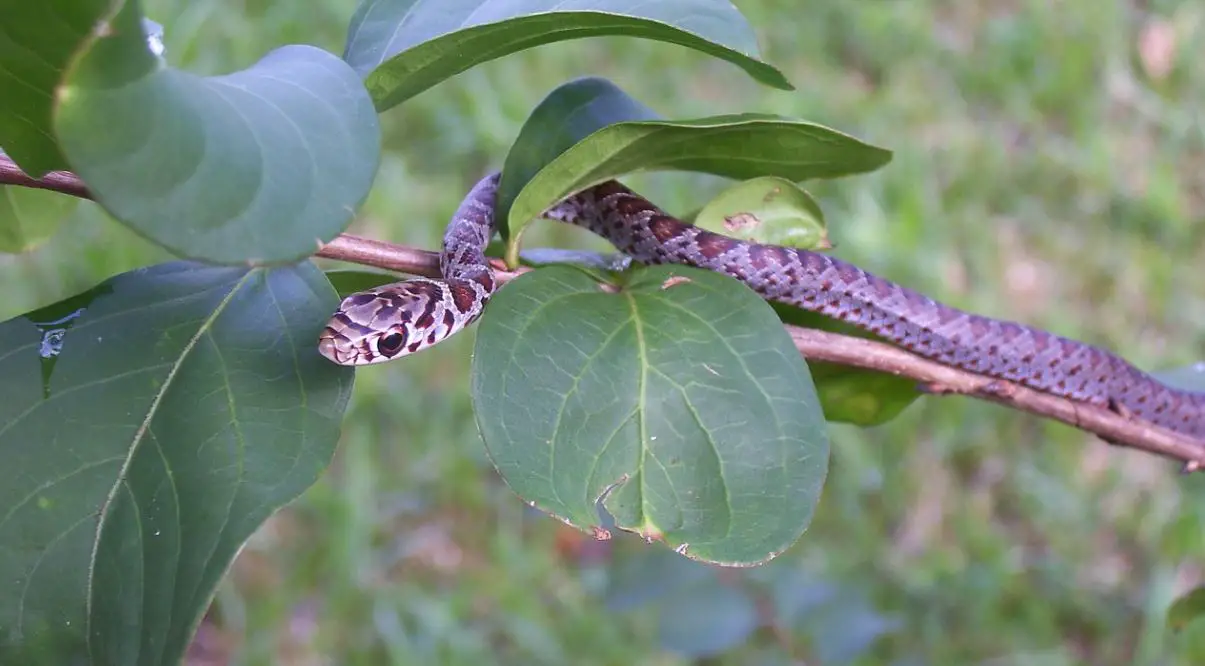
Growing up, I had always enjoyed catching garter and grass snakes. I’d keep them for a little while in a jar and then release them a few days later. When you bring your captured snake home, let it alone for a few days in its new habitat. It will give time for your snake to become used to where it is and become comfortable. It may be shy and hide from you and won’t eat when you’re around.
What if a wild Garter won’t eat?
Sometimes your wild snake won’t eat, but you could be offering the wrong food. You might have to try different types of food until you find one it will consume. In some cases, a wild snake just won’t eat and try to starve itself to death. In that case, you should take the snake and bring it back where you found it and release it.
Where to buy a garter snake?
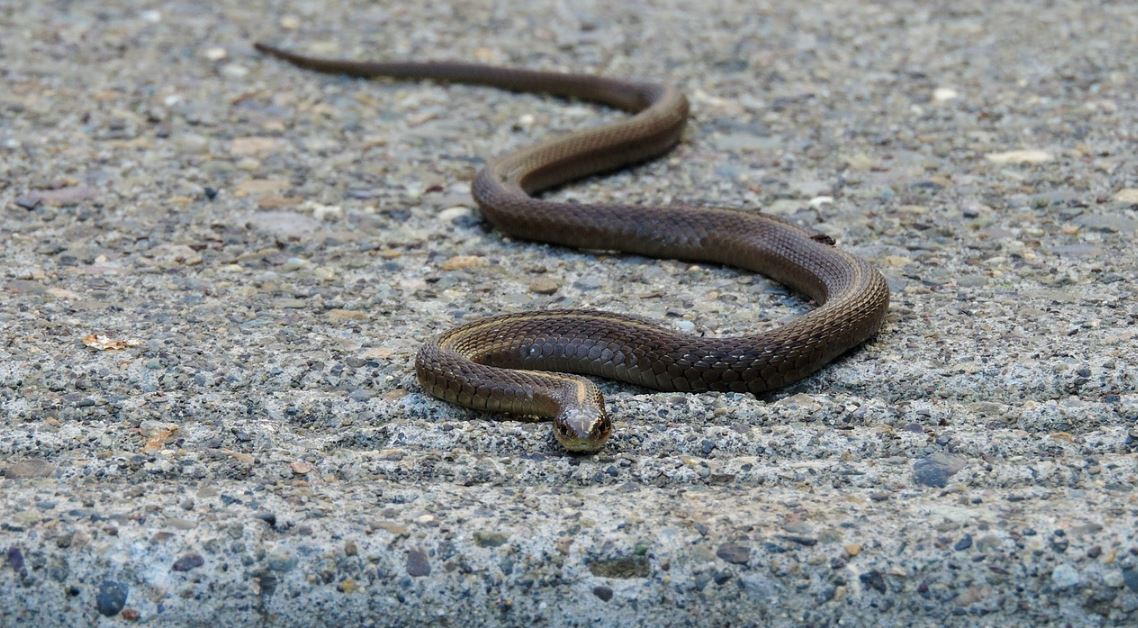
You can buy a garter snake online and also in pet stores. You can find captive born baby garter snakes after the birthing season in late spring. Thru the summer, different species can be found in online classified. A captive-bred and born have fewer issues with disease and feeding.
What do baby garter snakes eat?
Baby garter snakes can be fed cut up nightcrawlers. Garter snakes, as a whole, eat earthworms, mice, fish like live guppies or small fish. You can place the live fish in your garter snake’s water dish at feeding time, so your snake can hunt live food. To feed your snake worms, place them in a plastic tray, and put it inside the habitat. Buying earthworms from a pet store is the safest.
Don’t restrict your snake’s diet to just fish because that won’t fill all the needed requirements for your pet’s needs. You can dip an earthworm in reptile vitamins to give it some added vitamin requirements. Thiamine deficiency is a common occurrence in captive snakes of this species.
Your snake can be fed earthworms and fish twice a week and even an occasional slug. If you feed your snake rodents, then it only needs to be fed once a week. You can buy frozen rodents from a pet supplier.
What Health Problems Can They Have?
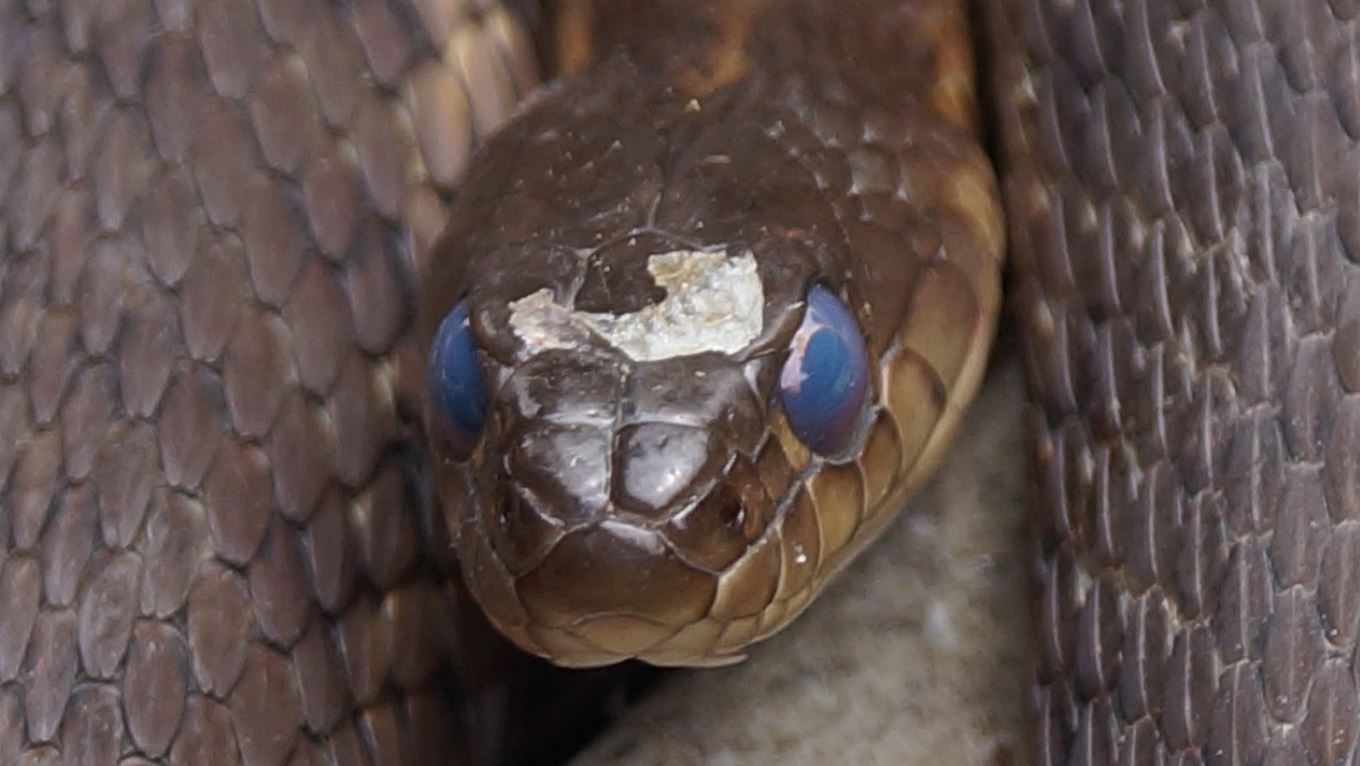
One of the most severe health problems your garter snake can have is internal parasites. Your snake may be more prone to parasites because of what it eats. Amphibians, earthworms, and fish can all carry parasites. Still, live fish can be the leading cause as well as wild-caught amphibians.
Microorganisms can cause infections, but roundworms, tapeworms, and pinworms are the main culprits. It causes problems when these burrow into your snake’s lungs and are difficult to detect. These can live in your snake’s lungs for years before there’s a sign of a problem.
If your snake has small lumps just under its skin, it could be a worm infestation. Your vet will need to remove it by making a small incision, grabbing the worm, and pulling it out. The bright side of this is that the worm has migrated from the lung to the skin. It’s almost impossible to remove a worm from your snake’s lung without your snake dying. Other symptoms of a worm present are swelling around the lungs, and when your snake breathes, there’s a hollow popping sound.
Your snake can develop a Vitamin B1 deficiency from eating too many fish. To counteract this, you need to have your snake ingest some thiamin. Your vet can inject it into your pet or force-feed a high-B1 diet. Then change your snake’s diet to food which doesn’t contain thiaminase.
Blister disease can develop from keeping your snake in too moist of conditions. A garter snake likes to for a swim, but it isn’t aquatic, but its’ prey is. Your snake’s cage needs to be kept dry. Blister disease is puffy white sores on your snake’s body. Put your snake in a drier habitat and apply Neosporin or Polyporin to cure the blisters.
Conclusion
When you own a garter snake, you can have many hours of entertainment and enjoyment. Keep your snake’s habitat clean and dry and feed it when it’s time. If you want more information on garter snakes, click the video below:
references:
https://emborapets.com/do-garter-snakes-make-good-pets/
http://www.reptilesmagazine.com/Garter-Snake-Care-Sheet/
https://petponder.com/garter-snakes-as-pets
https://www.snakesforpets.com/garter-snake-pet-care/



